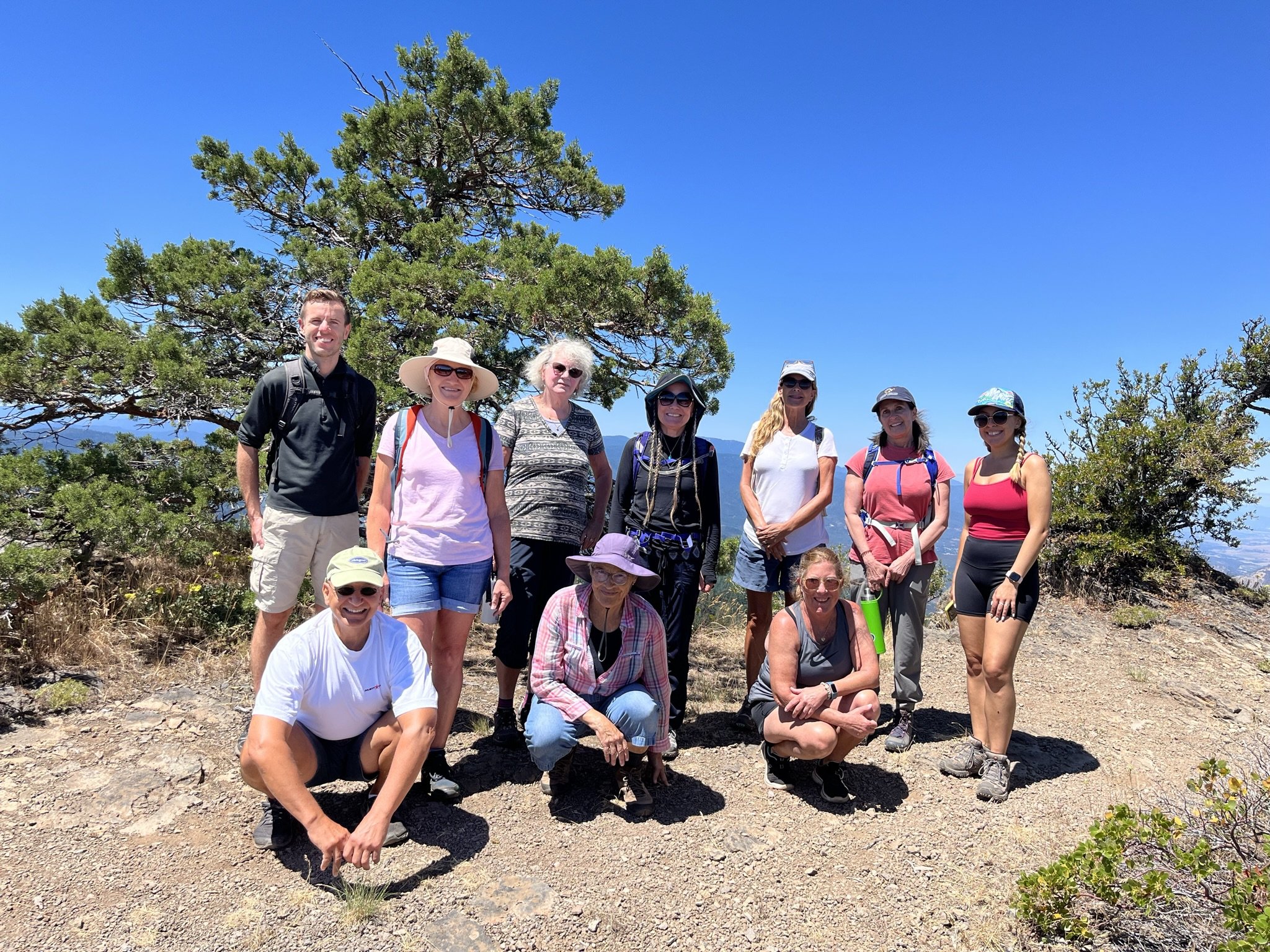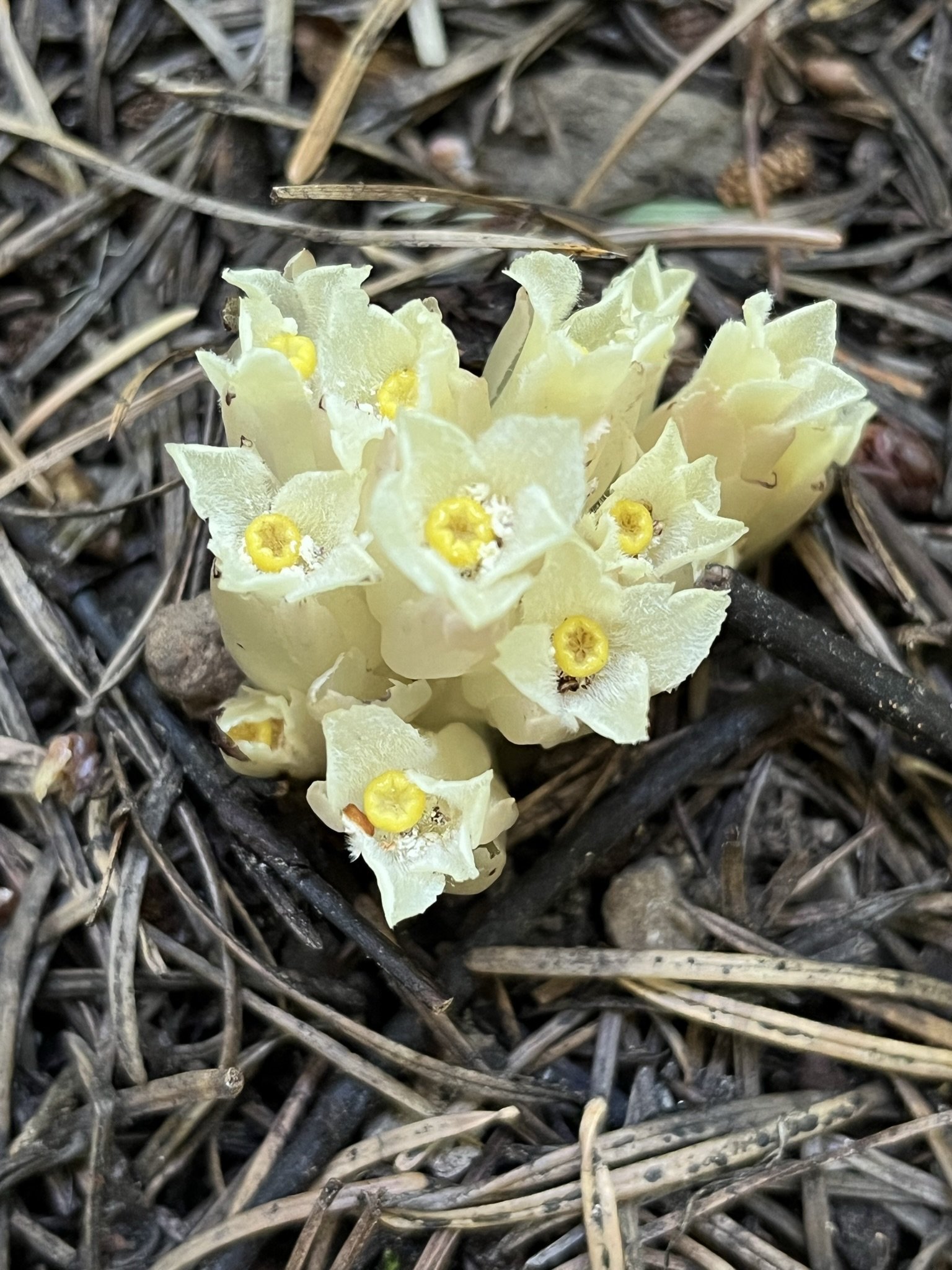Sunday Hike #4 - Hobart Bluff, 7/17/2022
Hobart Bluff is an iconic hike in the Monument. From the bluff’s high point at 5,502 ft, there are views in all directions: Pilot Rock, Mount Ashland, Emigrant Lake and the Rogue Valley below, Mount McLoughlin, and Mount Shasta all visible. We took a nice break up at the top, as one should on any hike, enjoying lunch with a view and a little geology talk. The Cascade Range is volcanic and very young, geologically speaking (the two conical volcanoes in view age about 5 million years old). The rocks we stood on at Hobart Bluff were around 25 million years old, an igneous intrusion of harder rock that is now exposed after years of weathering and erosion to the softer rock that used to encase the bluff.
To get to this amazing viewpoint, we took the PCT northbound, with thru-hikers passing us by on their hundredth or so day out on the trail as we slowly ambled along admiring butterflies soaring, birds singing, and some late-season blooms, including some rarities!
Looking up at one of the steep hillside meadows along the trail, we noticed the spectacular Washington lily (Lilium washingtonianum) standing at 6.5 feet tall with a big white blossom. I recalled seeing the leaves and stem of this plant on the Grizzly Peak hike about a month ago, so this off-trail flower merited a look through a pair of binoculars we passed around.
The botanical excitement continued as we walked through a more forested section of the PCT with big old conifers shading the trail. Two rare species of mycotrophic plants were in bloom: Phantom orchid (Cephalanthera austiniae) and Gnome plant (Hemitomes congestum)! These species do not make their own chlorophyl, lacking the green color typical of Kingdom Plantae. On the hike, we called them “saprophytic” plants. According to the U.S. Forest Service, this term misses the mark. These plants don’t get carbon nutrients from decaying organic matter (saprophytic), but are instead engaged in a symbiotic relationship with the soil fungi living in and around root systems of the trees and plants of the forest. See this awesome article for more info: https://www.fs.fed.us/wildflowers/beauty/mycotrophic/whatarethey.shtml.
Sometimes, as a ranger-naturalist-hiking guide, I am stumped by the questions folks ask. In this particular job, I am challenged. The biodiversity of the CSNM is real! There are new flowers every week that I have yet to be acquainted with. The place is so vast and the history is so varied. I am still very much getting to know the area, and it’s been humbling and exciting to do so alongside folks who are interested in learning more. Thank you, Sunday Hikers, for challenging me to learn more about the story of this land by way of your imaginative inquiries and creative curiosities.
Words and photos by Interpretive Ranger Sarah Martinez.




